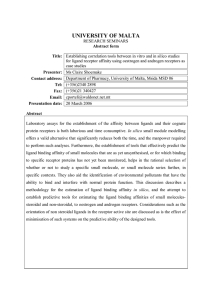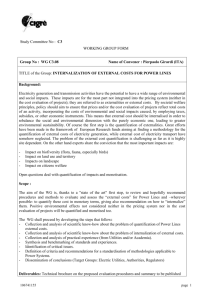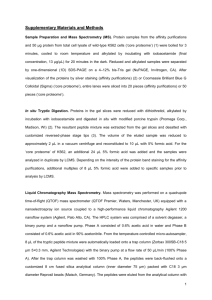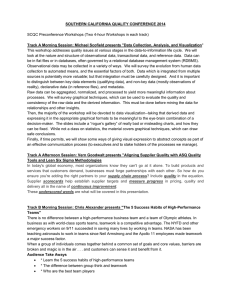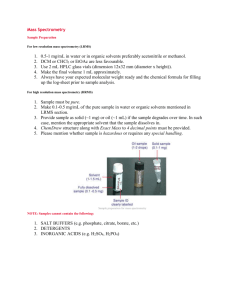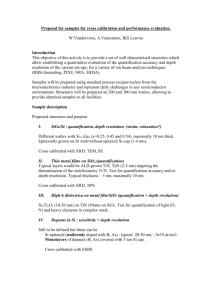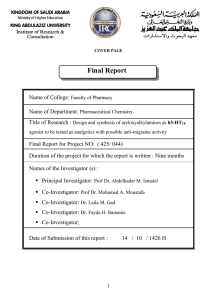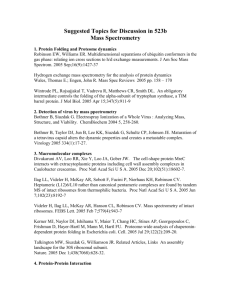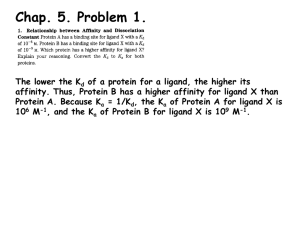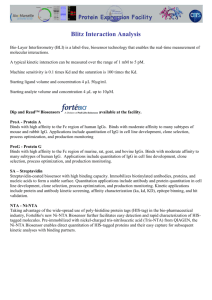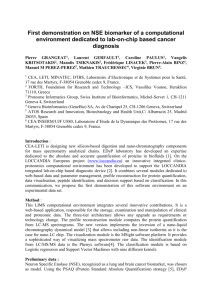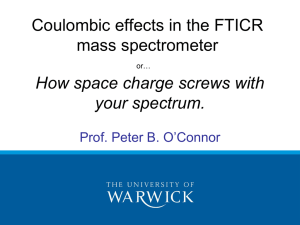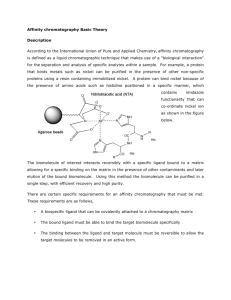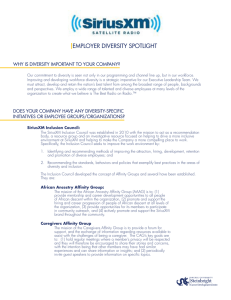Mass spectrometric characterization of a conformational epitope of
advertisement
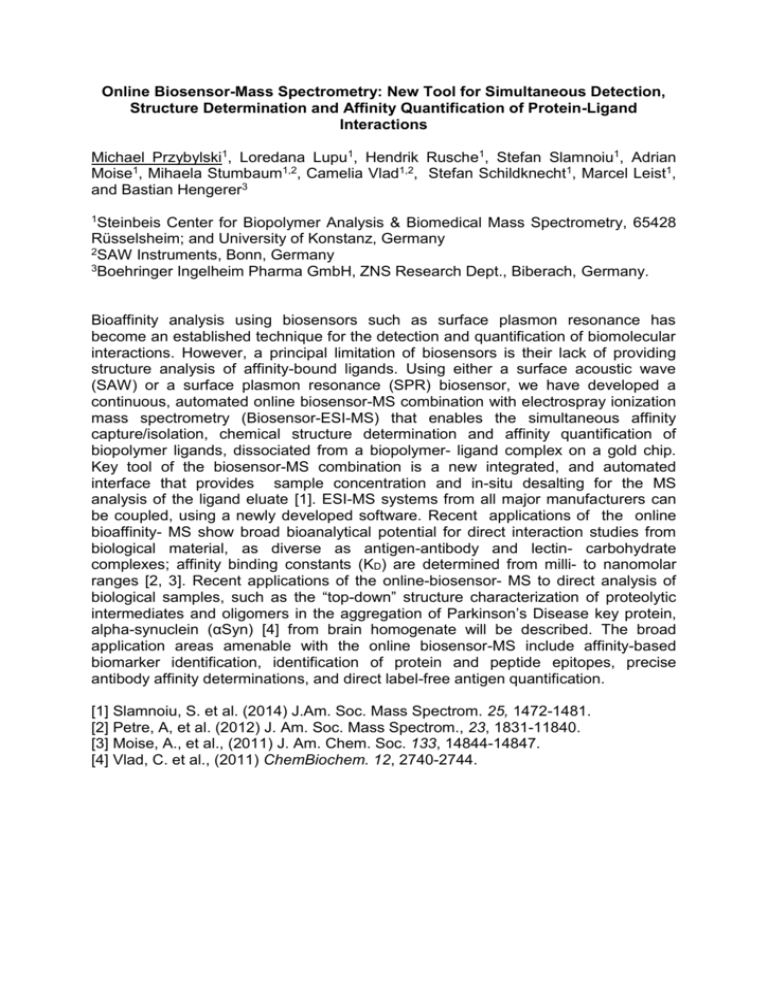
Online Biosensor-Mass Spectrometry: New Tool for Simultaneous Detection, Structure Determination and Affinity Quantification of Protein-Ligand Interactions Michael Przybylski1, Loredana Lupu1, Hendrik Rusche1, Stefan Slamnoiu1, Adrian Moise1, Mihaela Stumbaum1,2, Camelia Vlad1,2, Stefan Schildknecht1, Marcel Leist1, and Bastian Hengerer3 1Steinbeis Center for Biopolymer Analysis & Biomedical Mass Spectrometry, 65428 Rüsselsheim; and University of Konstanz, Germany 2SAW Instruments, Bonn, Germany 3Boehringer Ingelheim Pharma GmbH, ZNS Research Dept., Biberach, Germany. Bioaffinity analysis using biosensors such as surface plasmon resonance has become an established technique for the detection and quantification of biomolecular interactions. However, a principal limitation of biosensors is their lack of providing structure analysis of affinity-bound ligands. Using either a surface acoustic wave (SAW) or a surface plasmon resonance (SPR) biosensor, we have developed a continuous, automated online biosensor-MS combination with electrospray ionization mass spectrometry (Biosensor-ESI-MS) that enables the simultaneous affinity capture/isolation, chemical structure determination and affinity quantification of biopolymer ligands, dissociated from a biopolymer- ligand complex on a gold chip. Key tool of the biosensor-MS combination is a new integrated, and automated interface that provides sample concentration and in-situ desalting for the MS analysis of the ligand eluate [1]. ESI-MS systems from all major manufacturers can be coupled, using a newly developed software. Recent applications of the online bioaffinity- MS show broad bioanalytical potential for direct interaction studies from biological material, as diverse as antigen-antibody and lectin- carbohydrate complexes; affinity binding constants (KD) are determined from milli- to nanomolar ranges [2, 3]. Recent applications of the online-biosensor- MS to direct analysis of biological samples, such as the “top-down” structure characterization of proteolytic intermediates and oligomers in the aggregation of Parkinson’s Disease key protein, alpha-synuclein (αSyn) [4] from brain homogenate will be described. The broad application areas amenable with the online biosensor-MS include affinity-based biomarker identification, identification of protein and peptide epitopes, precise antibody affinity determinations, and direct label-free antigen quantification. [1] Slamnoiu, S. et al. (2014) J.Am. Soc. Mass Spectrom. 25, 1472-1481. [2] Petre, A, et al. (2012) J. Am. Soc. Mass Spectrom., 23, 1831-11840. [3] Moise, A., et al., (2011) J. Am. Chem. Soc. 133, 14844-14847. [4] Vlad, C. et al., (2011) ChemBiochem. 12, 2740-2744.

